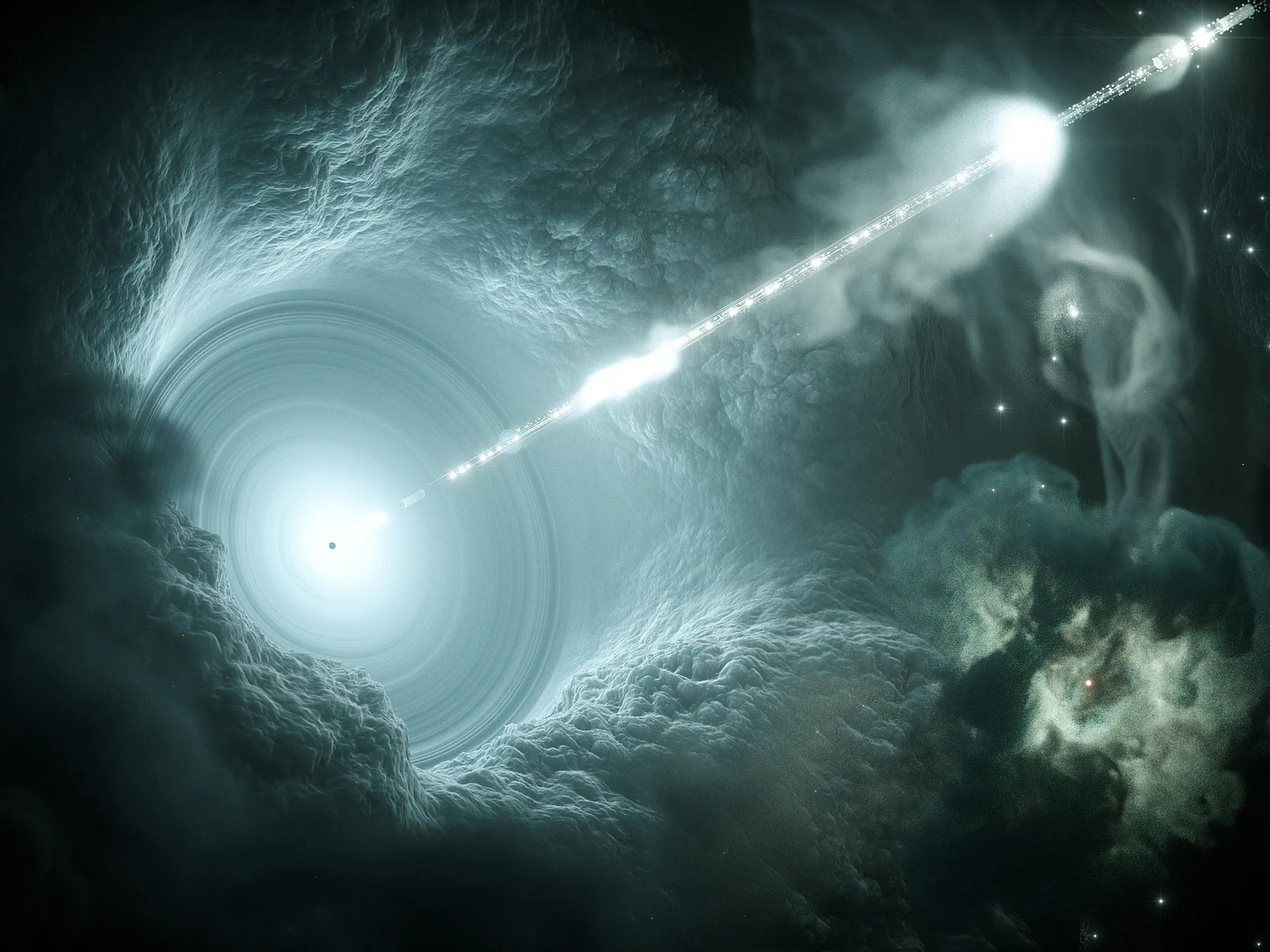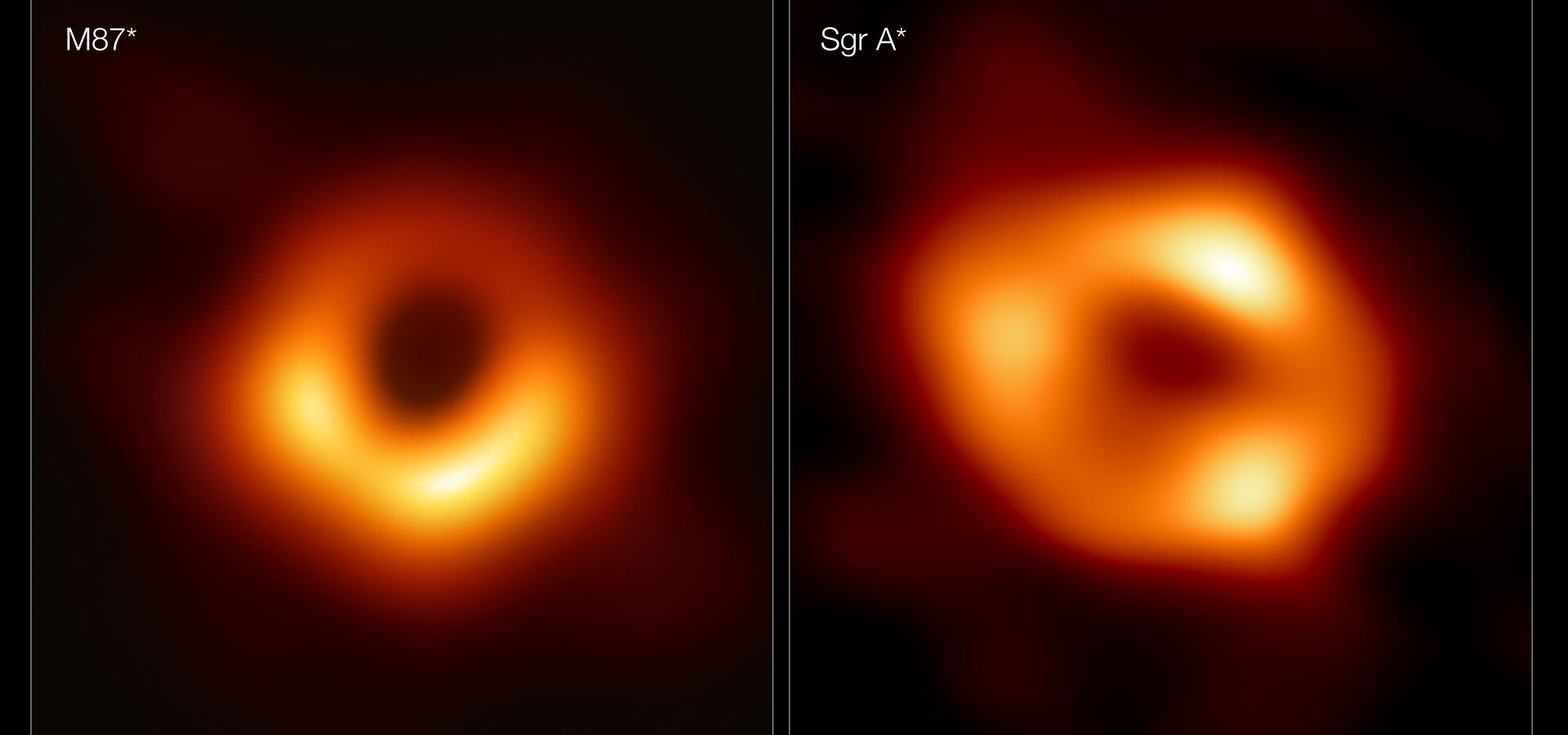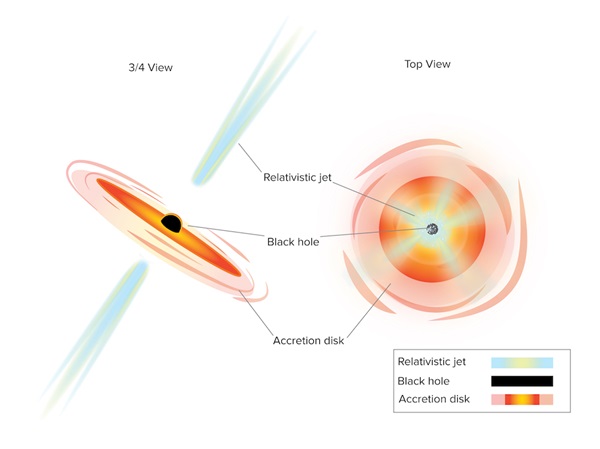Black Holes, Quasars, and Blazars
Some of the simplest and most powerful objects in the cosmos.

Black holes are some of the simplest objects in the universe with only three properties: mass, spin, and charge. Mass generally divides the very small (stellar) from the very large (supermassive), spin divides the rotating (likely ubiquitous) from the non-rotating (likely purely hypothetical), and charge divides those that have accreted more protons (positive) from those that have accreted more electrons (negative). Quasars and blazars result from black holes depending on their mass and level of activity.
Mass
It is generally believed that there are two main types of black holes when categorised by their mass: stellar and supermassive. Stellar black holes are remnants of large stars (3-10 solar masses) that go supernova and then proceed to collapse into a singularity under their own weight. Whilst stellar black holes are difficult to detect (due to them not emitting light and occassionally forming visible accretion disks), there is an estimated ten million to one billion of them in the Milky Way (compared to the estimation of about 100 billion stars in the Milky Way)
Supermassive blackholes have masses ranging from millions to billions of solar masses and they exist in the centre of the vast majortiy of galaxies

Quasars
A quasar (short for quasi-stellar radio source) is a term used to describe active galactic nuclei - that is, supermassive black holes at the centre of galaxies that are feeding on matter and therefore emitting a significant amount of radiation. These luminous structures include an accretion disk emitting visible and ultraviolet light, jets of radio light all the way through to X-ray light are aligned with the axis of rotation of the black hole, and the gas and dust surrounding the black hole shine in infrared light (Figure 2)

Blazars
A blazar is simply a quasar that happens to have its jets pointed towards Earth (Figure 3). Whilst quasars can still be slightly difficult to observe, blazars are much easier to identify as they are some of the most luminous objects in the universe due to their special orientation. As aforementioned, the jets of active galactic nuclei also contain matter such as electrons, protons, and neutrinos moving at near luminal velocities. When considering a blazar, these particles are incident on the Earth, and some experiments such as the IceCube Neutrino Observatory in Antarctica are designed to detect the incident neutrinos from blazars.

Spin
Black holes form by the collapse of matter to a singularity, and since almost all gravitationally bound objects exhibit some angular momentum, it is highly likely that a black hole will also exhibit angular momentum. Furthermore, since black holes form from objects that were once much bigger (e.g., large stars), their rate of rotation also increases as the radius of the object decreases before the black hole is formed (in the same way that an ice skaters rate of rotation increases as they pull their arms towards their body - conservation of angular momentum). Due to this, black holes can spin at rates approaching the speed of light. For example, the black hole Cygnus X-1 (in constellation Cygnus) was measured to have a rate of rotation of about 800 times per second, and with a radius of only 44km
In such conditions, the effects of frame dragging - when a massive body (which naturally distorts the fabric of spacetime as General Relativity states) moves through or rotates within spacetime, causing the fabric to be dragged with the object. In 2012 and 2022, the Italian Space Agency launched the Laser Relativity Satellite (LARES) 1 and 2, respectively, with the intention of measuring frame dragging caused by Earth.
Charge
As mentioned at the start of this page, black holes can become charged by accreting more positively charged matter than negatively charged matter, or vice versa. However, charged black holes are unlikely to occur in nature as once the black hole becomes slightly positively or negatively charged, it will more strongly attract matter of the opposite charge, accrete it, and become more neutral. Thus, neutrally charged black holes are expected to be much more common than charged black holes.
Spin vs. Charge
A summary of the types of black holes according to their spin and charge properties is hown in the table below.
| Not Charged | Charged | |
|---|---|---|
| Not Rotating | Swarzchild | Reissner–Nordström |
| Rotating | Kerr | Kerr–Newman |